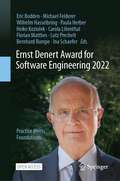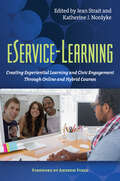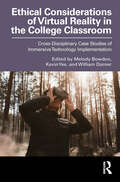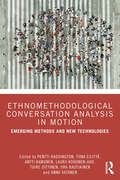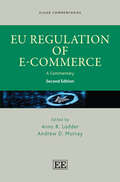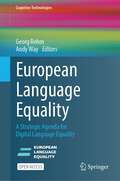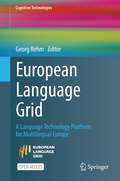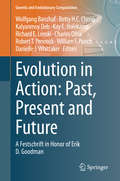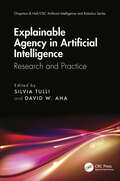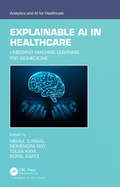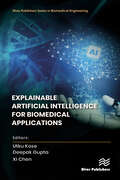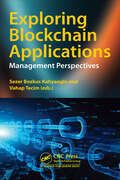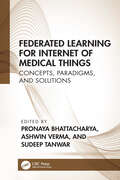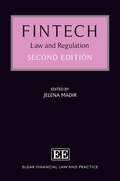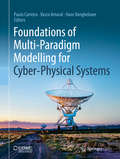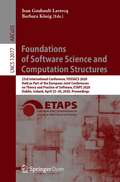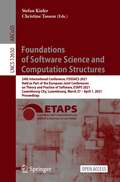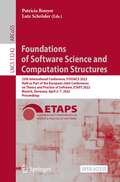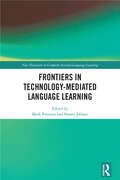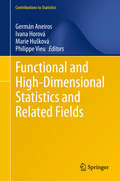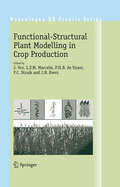- Table View
- List View
Ernst Denert Award for Software Engineering 2022: Practice Meets Foundations
This open access book provides an overview of the dissertations of the five nominees for the Ernst Denert Award for Software Engineering in 2022. The prize, kindly sponsored by the Gerlind & Ernst Denert Stiftung, is awarded for excellent work within the discipline of Software Engineering, which includes methods, tools and procedures for better and efficient development of high quality software. An essential requirement for the nominated work is its applicability and usability in industrial practice. The book contains five papers that describe the works by Jannik Fischbach (Netlight Consulting GmbH and fortiss GmbH), who won the award, entitled Conditional Statements in Requirements Artifacts: Logical Interpretation, Use Cases for Automated Software Engineering, and Fine-Grained Extraction, Christian Kirchhof's (RWTH Aachen University) From Design to Reality: An Overview of the MontiThings Ecosystem for Model-Driven IoT Applications, Sven Peldszus's (Ruhr University Bochum) research about Security Compliance in Model-driven Development of Software Systems in Presence of Long-Term Evolution and Variants, Florian Rademacher's (RWTH Aachen University) work on Model-Driven Engineering of Microservice Architectures, and Alexander Trautsch's (University of Passau) Usefulness of Automatic Static Analysis Tools: Evidence from Four Case Studies. The chapters describe key findings of the respective works, show their relevance and applicability to practice and industrial software engineering projects, and provide additional information and findings that have only been discovered afterwards, e.g. when applying the results in industry. This way, the book is not only interesting to other researchers, but also to industrial software professionals who would like to learn about the application of state-of-the-art methods in their daily work.
eService-Learning: Creating Experiential Learning and Civic Engagement Through Online and Hybrid Courses
This book serves as an introduction to using online teaching technologies and hybrid forms of teaching for experiential learning and civic engagement. Service-learning has kept pace neither with the rapid growth in e-learning in all its forms nor with the reality that an increasing number of students are learning online without exposure to the benefits of this powerful pedagogy.Eservice-learning (electronic service-learning) combines service-learning and on-line learning and enables the delivery of the instruction and/or the service to occur partially or fully online. Eservice-learning allows students anywhere, regardless of geography, physical constraints, work schedule, or other access limitations, to experience service-learning. It reciprocally also equips online learning with a powerful tool for engaging students.In eservice-learning, the core components of service, learning, and reflection may take a different form due to the online medium—for example, reflection often occurs through discussion board interactions, journals, wikis, or blogs in an eservice-learning course. Moreover, the service, though still community-based, creates a world of opportunities to connect students with communities across the globe—as well as at their very own doorstep.This book introduces the reader to the four emerging types of eservice-learning, from Extreme EService-Learning (XE-SL) classes where 100% of the instruction and 100% of the service occur online, to three distinct forms of hybrid where either the service or the instruction are delivered wholly on-line – with students, for instance, providing online products for far-away community partners – or in which both are delivered on-site and online. It considers the instructional potential of common mobile technologies – phones, tablets and mobile reading devices. The authors also address potential limitations, such as technology challenges, difficulties sustaining three-way communication among the instructor, community partner, and students, and added workload.The book includes research studies on effectiveness as well as examples of practice such drafting grants for a community partner, an informational technology class building online communities for an autism group, and an online education class providing virtual mentoring to at-risk students in New Orleans from across the country.
EA Sports FIFA: Feeling the Game
If there is anything close to a universal game, it is association football, also known as soccer, football, fussball, fútbol, fitba, and futebol. The game has now moved from the physical to the digital - EA's football simulation series FIFA - with profound impacts on the multibillion sports and digital game industries, their cultures and players. Throughout its development history, EA's FIFA has managed to adapt to and adopt almost all video game industry trends, becoming an assemblage of game types and technologies that is in itself a multi-faceted probe of the medium's culture, history, and technology. EA Sports FIFA: Feeling the Game is the first scholarly book to address the importance of EA's FIFA. From looking at the cultures of fandom to analyzing the technical elements of the sports simulation, and covering the complicated relations that EA's FIFA has with gender, embodiment, and masculinity, this collection provides a comprehensive understanding of a video game series that is changing the way the most popular sport in the world is experienced. In doing so, the book serves as a reference text for scholars in many disciplines, including game studies, sociology of sports, history of games, and sports research.
Ethical Considerations of Virtual Reality in the College Classroom: Cross-Disciplinary Case Studies of Immersive Technology Implementation
Ethical Considerations of Virtual Reality in the College Classroom collects case studies that address both pedagogical and ethical foundations of extended reality tools in postsecondary learning environments across disciplines. With today’s institutional programs and faculty leveraging cutting-edge virtual, augmented, and mixed reality opportunities to teach and promote achievement goals, it is imperative that new research into these technologies speaks directly to their challenges and affordances within broad academic settings. This book showcases real-world examples of faculty members who chronicle and develop their use of VR tools across learning contexts and student populations by creating their own digital experiences, adapting open-source tools, integrating commercial products, amplifying crucial course content, analyzing outcomes data, and more. Nontechnical readers will come away with a new understanding of key terms and concepts associated with virtual reality and essential heuristics for evaluating the ethical implications of immersive approaches.
Ethnomethodological Conversation Analysis in Motion: Emerging Methods and New Technologies
This volume discusses current and emerging trends in Ethnomethodological Conversation Analysis (EMCA). Focusing on step-by-step procedures of talk and interaction in real time, EMCA explores how people – through locally-produced, public, and common-sensical practices – accomplish activities together and thereby make sense and create social order as part of their everyday lives. The volume is divided into four parts, and it provides a timely methodological contribution by exploring new questions, settings, and recording technologies in EMCA for the study of social interaction. It addresses the methodical diversity in EMCA, including current practices as well as those testing its boundaries, and paves way for the development of future interaction research. At the same time, the book offers readers a glimpse into the ways in which human and non-human participants operate with each other and make sense of the world around them. The authors represent diverse fields of research, such as language studies, sociology, social psychology, human-computer interaction, and cognitive science. Ultimately, the book is a conversation opener that invites critical and constructive dialogue on how EMCA’s methodology and toolbox could be developed for the purpose of acquiring richer perspectives on endogenous social action. This is key reading for researchers and advanced students on a range of courses on conversation analysis, language in interaction, discourse studies, multimodality and more.
EU Regulation of E-Commerce: A Commentary (Elgar Commentaries series)
Significantly revised and expanded, this important book addresses the key pieces of EU legislation in the field of e-commerce, including on consumer rights, copyright, electronic identification, open internet access, electronic payments, competition law and digital content.Key features of this second edition include:thoroughly up-to-date analysis of decisions of the Court of Justice and the Commissionarticle-by-article commentary on the latest directives and regulations in the field of e-commercea unique structure featuring detailed tables of cases and legislation and paragraph references, enabling easy access to all substantive legal provisionsnew chapters featuring analysis of services in the internal market, copyright in the Digital Single market, measures concerning open internet access and more.This unique work provides an updated account of the essential pieces of EU legislation on e-commerce. Legal practitioners will benefit from the clear structure and close examination of key provisions. The book will also appeal to legal scholars and advanced students, who will appreciate the concise overview and thoughtful analysis on future developments in the field.
European Language Equality: A Strategic Agenda for Digital Language Equality (Cognitive Technologies)
This open access book presents a comprehensive collection of the European Language Equality (ELE) project’s results, its strategic agenda and roadmap with key recommendations to the European Union on how to achieve digital language equality in Europe by 2030. The fabric of the EU linguistic landscape comprises 24 official languages and over 60 regional and minority languages. However, language barriers still hamper communication and the free flow of information. Multilingualism is a key cultural cornerstone of Europe, signifying what it means to be and to feel European. Various studies and resolutions have found a striking imbalance in the support of Europe’s languages through technologies, issuing a call to action. Following an introduction, the book is divided into two parts. The first part describes the state of the art of language technology and language-centric AI and the definition and metrics developed to measure digital language equality. It also presents the status quo in 2022/2023, i.e., the current level of technology support for over 30 European languages. The second part describes plans and recommendations on how to bring about digital language equality in Europe by 2030. It includes chapters on the setup and results of the community consultation process, four technical deep dives, an overview of existing strategic documents and an abridged version of the strategic agenda and roadmap.The recommendations have been prepared jointly with the European community in the fields of language technology, natural language processing, and language-centric AI, as well as with representatives of relevant initiatives and associations, language communities and regional and minority language groups. Ensuring appropriate technology support for all European languages will not only create jobs, growth and opportunities in the digital single market. Overcoming language barriers in the digital environment is also essential for an inclusive society and for providing unity in diversity for many years to come.
European Language Grid: A Language Technology Platform for Multilingual Europe (Cognitive Technologies)
This open access book provides an in-depth description of the EU project European Language Grid (ELG). Its motivation lies in the fact that Europe is a multilingual society with 24 official European Union Member State languages and dozens of additional languages including regional and minority languages. The only meaningful way to enable multilingualism and to benefit from this rich linguistic heritage is through Language Technologies (LT) including Natural Language Processing (NLP), Natural Language Understanding (NLU), Speech Technologies and language-centric Artificial Intelligence (AI) applications. The European Language Grid provides a single umbrella platform for the European LT community, including research and industry, effectively functioning as a virtual home, marketplace, showroom, and deployment centre for all services, tools, resources, products and organisations active in the field. Today the ELG cloud platform already offers access to more than 13,000 language processing tools and language resources. It enables all stakeholders to deposit, upload and deploy their technologies and datasets. The platform also supports the long-term objective of establishing digital language equality in Europe by 2030 – to create a situation in which all European languages enjoy equal technological support. This is the very first book dedicated to Language Technology and NLP platforms. Cloud technology has only recently matured enough to make the development of a platform like ELG feasible on a larger scale. The book comprehensively describes the results of the ELG project. Following an introduction, the content is divided into four main parts: (I) ELG Cloud Platform; (II) ELG Inventory of Technologies and Resources; (III) ELG Community and Initiative; and (IV) ELG Open Calls and Pilot Projects.
Eventforschung: Aktueller Stand und Perspektiven (Markenkommunikation und Beziehungsmarketing)
Die Autorinnen und Autoren des Tagungsbandes ziehen anlässlich des 10-jährigen Jubiläums der Wissenschaftlichen Konferenz Eventforschung Bilanz und werfen gleichzeitig einen Blick in die Zukunft der Live Communication. Das Schwerpunktthema „10 Jahre Eventforschung“ wird mit vielfältigen wissenschaftlichen und praxisorientierten Beiträgen, u. a. zur Digitalisierung, zur Arbeitssituation in der Branche, zum agilen Projektmanagement, zum Datenschutzrecht sowie zur Nachhaltigkeit, bearbeitet. Dieser Band fasst die auf der 10. Eventkonferenz, die am 26. Oktober 2018 an der TU Chemnitz stattfand, vorgestellten und diskutierten Forschungsergebnisse und Praxisbeispiele zusammen.
Evolution in Action: A Festschrift in Honor of Erik D. Goodman (Genetic and Evolutionary Computation)
This edited research monograph brings together contributions from computer scientists, biologists, and engineers who are engaged with the study of evolution and how it may be applied to solve real-world problems. It also serves as a Festschrift dedicated to Erik D. Goodman, the founding director of the BEACON Center for the Study of Evolution in Action, a pioneering NSF Science and Technology Center headquartered at Michigan State University. The contributing authors are leading experts associated with the center, and they serve in top research and industrial establishments across the US and worldwide. Part I summarizes the history of the BEACON Center, with refreshingly personal chapters that describe Erik's working and leadership style, and others that discuss the development and successes of the center in the context of research funding, projects, and careers. The chapters in Part II deal with the evolution of genomes and evolvability. The contributions in Part III discuss the evolution of behavior and intelligence. Those in Part IV concentrate on the evolution of communities and collective dynamics. The chapters in Part V discuss selected evolutionary computing applications in domains such as arts and science, automated program repair, cybersecurity, mechatronics, and genomic prediction. Part VI deals with evolution in the classroom, using creativity in research, and responsible conduct in research training. The book concludes with a special chapter from Erik Goodman, a short biography that concentrates on his personal positive influences and experiences throughout his long career in academia and industry.
Explainable Agency in Artificial Intelligence: Research and Practice (Chapman & Hall/CRC Artificial Intelligence and Robotics Series)
This book focuses on a subtopic of explainable AI (XAI) called explainable agency (EA), which involves producing records of decisions made during an agent’s reasoning, summarizing its behavior in human-accessible terms, and providing answers to questions about specific choices and the reasons for them. We distinguish explainable agency from interpretable machine learning (IML), another branch of XAI that focuses on providing insight (typically, for an ML expert) concerning a learned model and its decisions. In contrast, explainable agency typically involves a broader set of AI-enabled techniques, systems, and stakeholders (e.g., end users), where the explanations provided by EA agents are best evaluated in the context of human subject studies. The chapters of this book explore the concept of endowing intelligent agents with explainable agency, which is crucial for agents to be trusted by humans in critical domains such as finance, self-driving vehicles, and military operations. This book presents the work of researchers from a variety of perspectives and describes challenges, recent research results, lessons learned from applications, and recommendations for future research directions in EA. The historical perspectives of explainable agency and the importance of interactivity in explainable systems are also discussed. Ultimately, this book aims to contribute to the successful partnership between humans and AI systems. Features: • Contributes to the topic of explainable artificial intelligence (XAI) • Focuses on the XAI subtopic of explainable agency • Includes an introductory chapter, a survey, and five other original contributions
Explainable AI in Healthcare: Unboxing Machine Learning for Biomedicine (Analytics and AI for Healthcare)
This book combines technology and the medical domain. It covers advances in computer vision (CV) and machine learning (ML) that facilitate automation in diagnostics and therapeutic and preventive health care. The special focus on eXplainable Artificial Intelligence (XAI) uncovers the black box of ML and bridges the semantic gap between the technologists and the medical fraternity. Explainable AI in Healthcare: Unboxing Machine Learning for Biomedicine intends to be a premier reference for practitioners, researchers, and students at basic, intermediary levels and expert levels in computer science, electronics and communications, information technology, instrumentation and control, and electrical engineering. This book will benefit readers in the following ways: Explores state of art in computer vision and deep learning in tandem to develop autonomous or semi-autonomous algorithms for diagnosis in health care Investigates bridges between computer scientists and physicians being built with XAI Focuses on how data analysis provides the rationale to deal with the challenges of healthcare and making decision-making more transparent Initiates discussions on human-AI relationships in health care Unites learning for privacy preservation in health care
Explainable Artificial Intelligence for Biomedical Applications (River Publishers Series in Biomedical Engineering)
Since its first appearance, artificial intelligence has been ensuring revolutionary outcomes in the context of real-world problems. At this point, it has strong relations with biomedical and today’s intelligent systems compete with human capabilities in medical tasks. However, advanced use of artificial intelligence causes intelligent systems to be black-box. That situation is not good for building trustworthy intelligent systems in medical applications. For a remarkable amount of time, researchers have tried to solve the black-box issue by using modular additions, which have led to the rise of the term: interpretable artificial intelligence. As the literature matured (as a result of, in particular, deep learning), that term transformed into explainable artificial intelligence (XAI). This book provides an essential edited work regarding the latest advancements in explainable artificial intelligence (XAI) for biomedical applications. It includes not only introductive perspectives but also applied touches and discussions regarding critical problems as well as future insights. Topics discussed in the book include: XAI for the applications with medical images XAI use cases for alternative medical data/task Different XAI methods for biomedical applications Reviews for the XAI research for critical biomedical problems. Explainable Artificial Intelligence for Biomedical Applications is ideal for academicians, researchers, students, engineers, and experts from the fields of computer science, biomedical, medical, and health sciences. It also welcomes all readers of different fields to be informed about use cases of XAI in black-box artificial intelligence. In this sense, the book can be used for both teaching and reference source purposes.
Exploring Blockchain Applications: Management Perspectives
In this book, the development process of blockchain algorithms and examples of their applications in different sectors are explored. The opportunities and challenges of blockchain implementations that arise in making technological innovations usable in corporate structures are discussed. In this respect, the book aims to deal with both the conceptual framework and the real challenges and opportunities encountered in practice regarding the blockchain applications. It is tried to contribute to the literature by presenting practical blockchain application suggestions to the readers on a scientific basis.It is a fact that blockchain technology is considered one of the most disruptive and revolutionary innovations after the invention of the internet. Blockchain technology, which was first used for cross-border payments, is coming up with a new application area in a different sector every day. The main purpose of Blockchain-based systems is to spread the "trust" service provided by a central intermediary to machines in transactions between two parties. Thus, it removes the need for this trust from the monopoly of a single intermediary. Blockchain implementation scenarios are to establish math-based trust in an untrusted environment.While exploring the complexity of blockchain applications in different sectors, the emerging risks are also examined from a management perspective. In particular, it is aimed to be a key work that the management levels of the enterprises can benefit from in the decision-making processes.It will be seen that blockchain technologies will be used unlimitedly in design, planning, management and decision making. This book will also introduce new visions for practitioners to use different blockchain technologies and methodologies to face problems.
Federated Learning for Internet of Medical Things: Concepts, Paradigms, and Solutions
This book intends to present emerging Federated Learning (FL)-based architectures, frameworks, and models in Internet of Medical Things (IoMT) applications. It intends to build on the basics of the healthcare industry, the current data sharing requirements, and security and privacy issues in medical data sharing. Once IoMT is presented, the book shifts towards the proposal of privacy-preservation in IoMT, and explains how FL presents a viable solution to these challenges. The claims are supported through lucid illustrations, tables, and examples that present effective and secured FL schemes, simulations, and practical discussion on use-case scenarios in a simple manner. The book intends to create opportunities for healthcare communities to build effective FL solutions around the presented themes, and to support work in related areas that will benefit from reading the book. It also intends to present breakthroughs and foster innovation in FL-based research, specifically in the IoMT domain. The emphasis of this book is on understanding the contributions of IoMT to healthcare analytics, and its aim is to provide insights including evolution, research directions, challenges, and the way to empower healthcare services through federated learning. The book also intends to cover the ethical and social issues around the recent advancements in the field of decentralized Artificial Intelligence. The book is mainly intended for undergraduates, post-graduates, researchers, and healthcare professionals who wish to learn FL-based solutions right from scratch, and build practical FL solutions in different IoMT verticals.
Festschrift zum 90. Geburtstag von Prof. Dr. Dr. h.c. mult. Günter Hotz
Die vorliegende Festschrift zum 90. Geburtstag von Prof. Dr. Dr. h.c. mult. Günter Hotz zeigt insbesondere über Kurzberichte der Doktorkinder die Nachwirkung von Günter Hotz’ Schaffen auf. Sie gibt damit auch einen schönen Überblick über die Informatik in Deutschland.
FinTech: Law and Regulation (Elgar Financial Law and Practice series)
This fully updated and revised second edition provides a practical examination of the opportunities and challenges presented by the rapid development of FinTech in recent years, particularly for regulators, who must decide how to apply current law to ever-changing concepts driven by continually advancing technologies. It addresses new legislative guidance on the treatment of cryptoassets and smart contracts, the European Commission’s Digital Finance Strategy and FinTech Action Plan, as well as analysing significant recent case law.Key features of the second edition include:Discussion of the impact of Brexit and the Covid-19 pandemic on the development and adoption of FinTech productsDetailed treatment of a broad spectrum of legal and regulatory issues in the FinTech sector, featuring insights from 33 experts from 10 countriesExamination of potential blockchain applications in the financial services industry, with a focus on smart contracts and regulatory challenges to widespread adoptionAnalysis of the key legal, regulatory and compliance issues surrounding FinTech developments in banking, payments and fundraising, from patents and robo-advice to novel solutions for supporting innovation such as regulatory sandboxes.Offering a thorough guide to the sector for practical use, this book will be invaluable for in-house lawyers as well as law firms looking for an overview of the legal and regulatory landscape of FinTech. It will also be an essential text for academics and students looking to understand the key issues in the field, as well as those interested in perspectives across the breadth of the sector.
Foundations of Multi-Paradigm Modelling for Cyber-Physical Systems
This open access book coherently gathers well-founded information on the fundamentals of and formalisms for modelling cyber-physical systems (CPS). Highlighting the cross-disciplinary nature of CPS modelling, it also serves as a bridge for anyone entering CPS from related areas of computer science or engineering.Truly complex, engineered systems—known as cyber-physical systems—that integrate physical, software, and network aspects are now on the rise. However, there is no unifying theory nor systematic design methods, techniques or tools for these systems. Individual (mechanical, electrical, network or software) engineering disciplines only offer partial solutions. A technique known as Multi-Paradigm Modelling has recently emerged suggesting to model every part and aspect of a system explicitly, at the most appropriate level(s) of abstraction, using the most appropriate modelling formalism(s), and then weaving the results together to form a representation of the system. If properly applied, it enables, among other global aspects, performance analysis, exhaustive simulation, and verification. This book is the first systematic attempt to bring together these formalisms for anyone starting in the field of CPS who seeks solid modelling foundations and a comprehensive introduction to the distinct existing techniques that are multi-paradigmatic. Though chiefly intended for master and post-graduate level students in computer science and engineering, it can also be used as a reference text for practitioners.
Foundations of Software Science and Computation Structures: 23rd International Conference, FOSSACS 2020, Held as Part of the European Joint Conferences on Theory and Practice of Software, ETAPS 2020, Dublin, Ireland, April 25–30, 2020, Proceedings (Lecture Notes in Computer Science #12077)
This open access book constitutes the proceedings of the 23rd International Conference on Foundations of Software Science and Computational Structures, FOSSACS 2020, which took place in Dublin, Ireland, in April 2020, and was held as Part of the European Joint Conferences on Theory and Practice of Software, ETAPS 2020.The 31 regular papers presented in this volume were carefully reviewed and selected from 98 submissions.The papers cover topics such as categorical models and logics; language theory, automata, and games; modal, spatial, and temporal logics; type theory and proof theory; concurrency theory and process calculi; rewriting theory; semantics of programming languages; program analysis, correctness, transformation, and verification; logics of programming; software specification and refinement; models of concurrent, reactive, stochastic, distributed, hybrid, and mobile systems; emerging models of computation; logical aspects of computational complexity; models of software security; and logical foundations of data bases.
Foundations of Software Science and Computation Structures: 24th International Conference, FOSSACS 2021, Held as Part of the European Joint Conferences on Theory and Practice of Software, ETAPS 2021, Luxembourg City, Luxembourg, March 27 – April 1, 2021, Proceedings (Lecture Notes in Computer Science #12650)
This open access book constitutes the proceedings of the 24th International Conference on Foundations of Software Science and Computational Structures, FOSSACS 2021, which was held during March 27 until April 1, 2021, as part of the European Joint Conferences on Theory and Practice of Software, ETAPS 2021. The conference was planned to take place in Luxembourg and changed to an online format due to the COVID-19 pandemic. The 28 regular papers presented in this volume were carefully reviewed and selected from 88 submissions. They deal with research on theories and methods to support the analysis, integration, synthesis, transformation, and verification of programs and software systems.
Foundations of Software Science and Computation Structures: 25th International Conference, FOSSACS 2022, Held as Part of the European Joint Conferences on Theory and Practice of Software, ETAPS 2022, Munich, Germany, April 2–7, 2022, Proceedings (Lecture Notes in Computer Science #13242)
This open access book constitutes the proceedings of the 25th International Conference on Foundations of Software Science and Computational Structures, FOSSACS 2022, which was held during April 4-6, 2022, in Munich, Germany, as part of the European Joint Conferences on Theory and Practice of Software, ETAPS 2022. The 23 regular papers presented in this volume were carefully reviewed and selected from 77 submissions. They deal with research on theories and methods to support the analysis, integration, synthesis, transformation, and verification of programs and software systems.
The French School of Programming
The French School of Programming is a collection of insightful discussions of programming and software engineering topics, by some of the most prestigious names of French computer science. The authors include several of the originators of such widely acclaimed inventions as abstract interpretation, the Caml, OCaml and Eiffel programming languages, the Coq proof assistant, agents and modern testing techniques.The book is divided into four parts: Software Engineering (A), Programming Language Mechanisms and Type Systems (B), Theory (C), and Language Design and Programming Methodology (D). They are preceded by a Foreword by Bertrand Meyer, the editor of the volume, a Preface by Jim Woodcock providing an outsider’s appraisal of the French school’s contribution, and an overview chapter by Gérard Berry, recalling his own intellectual journey. Chapter 2, by Marie-Claude Gaudel, presents a 30-year perspective on the evolution of testing starting with her own seminal work. In chapter 3, Michel Raynal covers distributed computing with an emphasis on simplicity. Chapter 4, by Jean-Marc Jézéquel, former director of IRISA, presents the evolution of modeling, from CASE tools to SLE and Machine Learning. Chapter 5, by Joëlle Coutaz, is a comprehensive review of the evolution of Human-Computer Interaction. In part B, chapter 6, by Jean-Pierre Briot, describes the sequence of abstractions that led to the concept of agent. Chapter 7, by Pierre-Louis Curien, is a personal account of a journey through fundamental concepts of semantics, syntax and types. In chapter 8, Thierry Coquand presents “some remarks on dependent type theory”. Part C begins with Patrick Cousot’s personal historical perspective on his well-known creation, abstract interpretation, in chapter 9. Chapter 10, by Jean-Jacques Lévy, is devoted to tracking redexes in the Lambda Calculus. The final chapter of that part, chapter 11 by Jean-Pierre Jouannaud, presents advances in rewriting systems, specifically the confluence of terminating rewriting computations. Part D contains two longer contributions. Chapter 12 is a review by Giuseppe Castagna of a broad range of programming topics relying on union, intersection and negation types. In the final chapter, Bertrand Meyer covers “ten choices in language design” for object-oriented programming, distinguishing between “right” and “wrong” resolutions of these issues and explaining the rationale behind Eiffel’s decisions.This book will be of special interest to anyone with an interest in modern views of programming — on such topics as programming language design, the relationship between programming and type theory, object-oriented principles, distributed systems, testing techniques, rewriting systems, human-computer interaction, software verification… — and in the insights of a brilliant group of innovators in the field.
Frontiers in Technology-Mediated Language Learning (New Directions in Computer Assisted Language Learning)
In the context of continuing technological innovation, the field of technology-mediated foreign language learning is expanding rapidly. Advances in digital technologies are providing researchers with opportunities to investigate a range of exciting new areas of research. This edited volume is designed to showcase a selection of recent cutting-edge innovations. This publication incorporates chapters dealing with the use virtual reality, social networking, speech technologies and social semiotics. Also included are chapters that focus on the relevant review work that is vital for progress in the field. This publication provides an indispensable guide to a wide range of practitioners, including language educators, researchers, graduate students, learning scientists and instructional designers.
Functional and High-Dimensional Statistics and Related Fields (Contributions to Statistics)
This book presents the latest research on the statistical analysis of functional, high-dimensional and other complex data, addressing methodological and computational aspects, as well as real-world applications. It covers topics like classification, confidence bands, density estimation, depth, diagnostic tests, dimension reduction, estimation on manifolds, high- and infinite-dimensional statistics, inference on functional data, networks, operatorial statistics, prediction, regression, robustness, sequential learning, small-ball probability, smoothing, spatial data, testing, and topological object data analysis, and includes applications in automobile engineering, criminology, drawing recognition, economics, environmetrics, medicine, mobile phone data, spectrometrics and urban environments. The book gathers selected, refereed contributions presented at the Fifth International Workshop on Functional and Operatorial Statistics (IWFOS) in Brno, Czech Republic. The workshop was originally to be held on June 24-26, 2020, but had to be postponed as a consequence of the COVID-19 pandemic. Initiated by the Working Group on Functional and Operatorial Statistics at the University of Toulouse in 2008, the IWFOS workshops provide a forum to discuss the latest trends and advances in functional statistics and related fields, and foster the exchange of ideas and international collaboration in the field.
Functional-Structural Plant Modelling in Crop Production (Wageningen UR Frontis Series #22)
Functional-structural plant models (FSPMs) describe in quantitative terms the development over time of the three-dimensional (3D) structure of plants as governed by physiological processes and affected by environmental factors. FSPMs are particularly suited to analyse problems in which the spatial structure of the plant or its canopy is an essential factor to explain, e.g., plant competition (intra-plant, inter-plant, inter-species) and the effects of plant configuration and plant manipulation (e.g., pruning and harvesting) on yield and produce quality. This book describes the philosophy of functional-structural plant modelling and several tools for making FSPMs; it outlines methods for measuring essential parameters, including those pertaining to plant structure. As FSPMs offer new opportunities to model sink–source interactions, the physiological theory and modelling approaches regarding partitioning of carbon are given specific attention. Examples of application of FSPMs include wheat modelling in the context of remote sensing and the analysis of predator–prey insect interactions on glasshouse plants. The book will be useful for scientists and advanced students interested in innovative approaches in plant and crop modelling.
